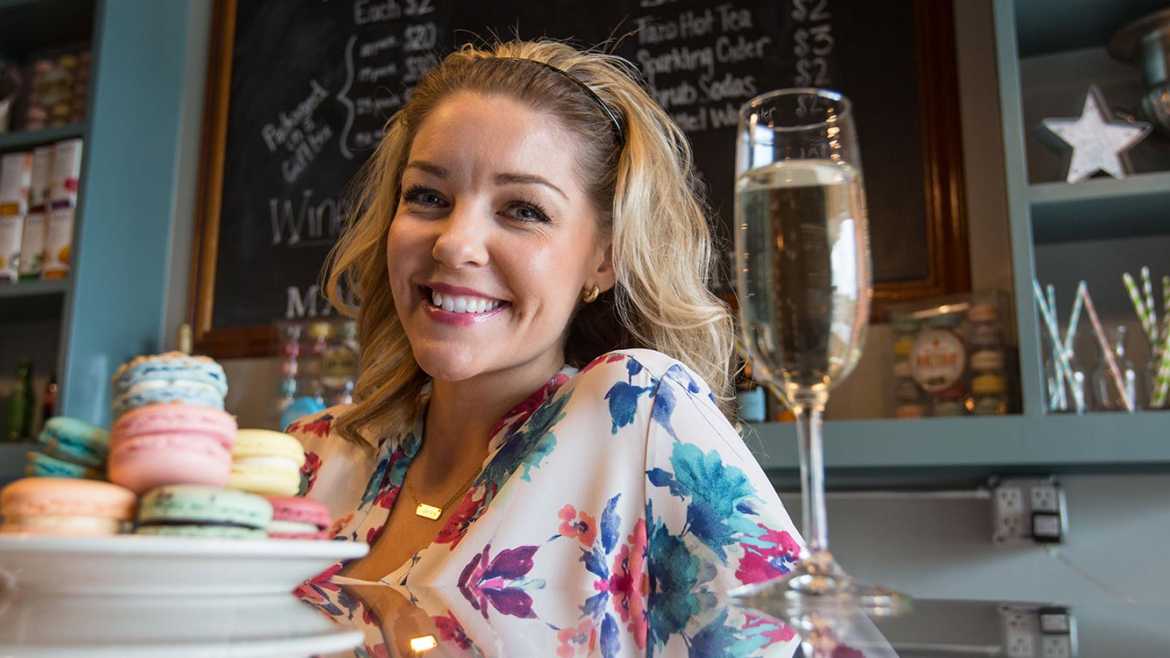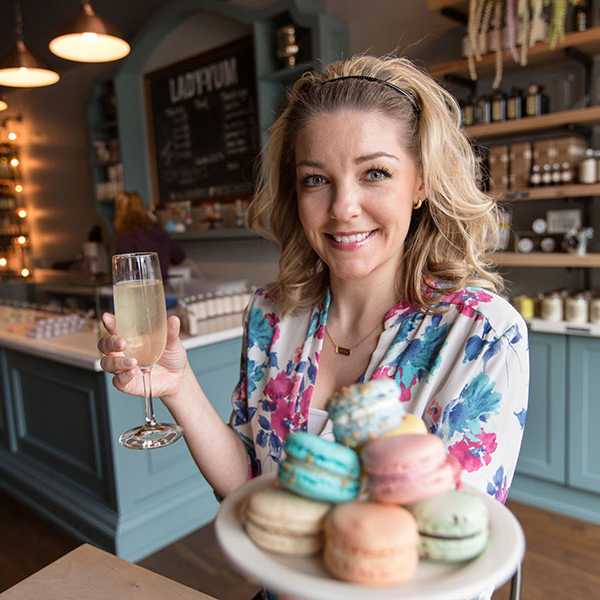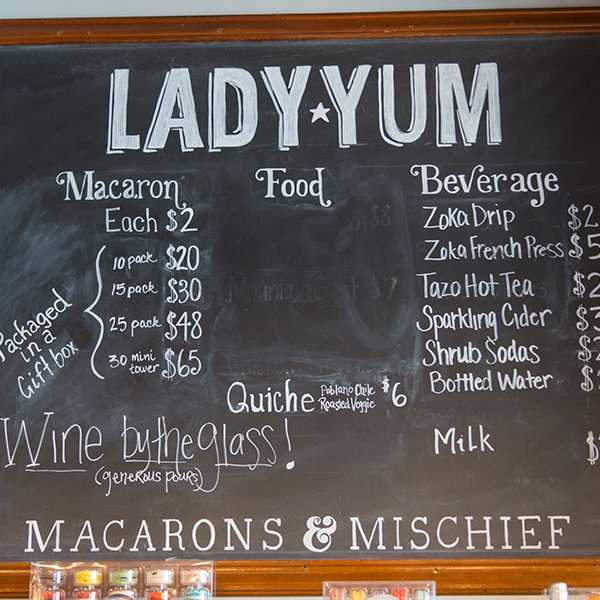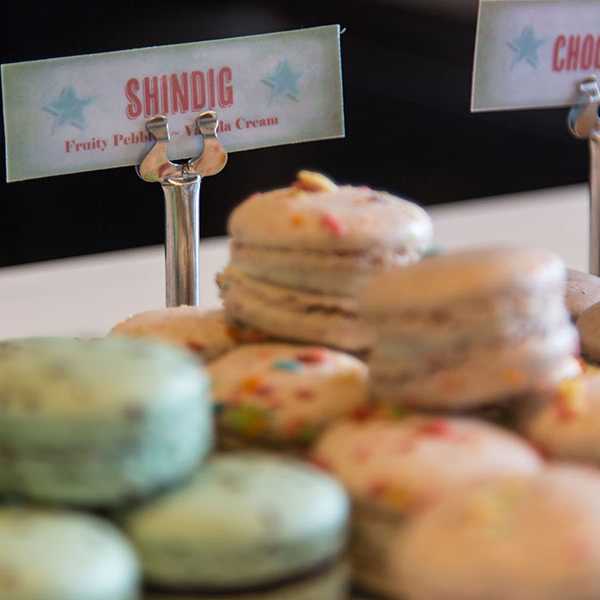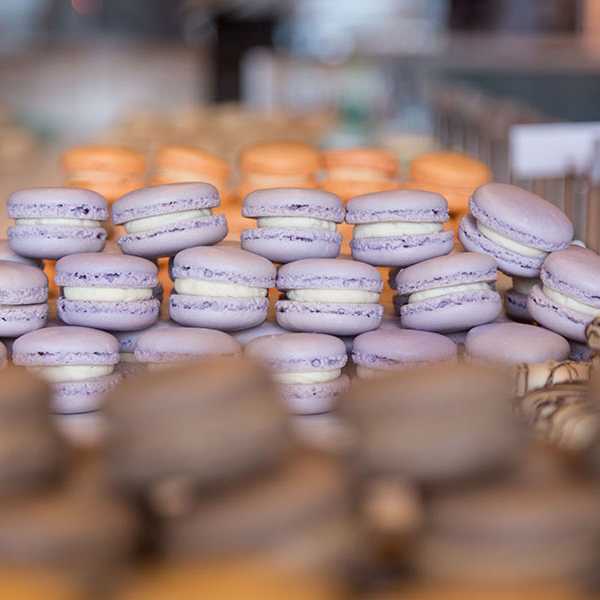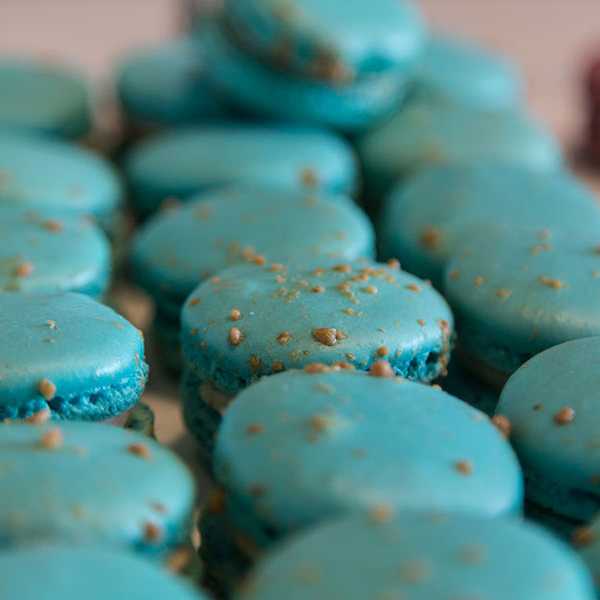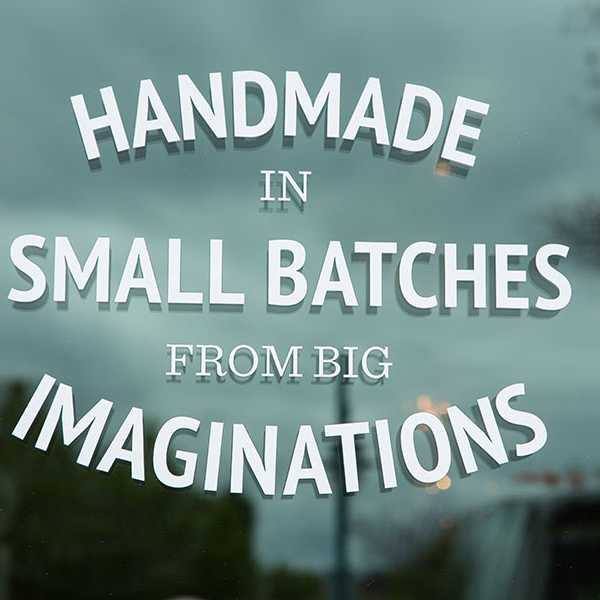Megan Wagstaff ’03
Others thought Megan Wagstaff ’03 was crazy to ditch a perfectly good job to bake, a move that resulted in her macaron shop Lady Yum. But daydreaming about leaving the job she hated made her feel like the carefree little girl she once was, taking the cookbook from her mother and baking cookies galore.
Pivot – it’s a business buzzword used by tech entrepreneurs to explain shifting directions until they develop something that’s viable and profitable.
But the basic definition is even better: It’s the action of turning around a point, or a person or thing that is central or important to someone or something else.
PLU alumna Megan (Baylous) Wagstaff ’03, founder of Kirkland’s Lady Yum Macarons & Mischief, is proof that pivoting in your life can pay off in ways far beyond paychecks. Using a series of career moves, Wagstaff stopped the rat race and gave herself a three-year deadline to realize and create a more authentic career. The result? Sweet success.
“They say you never know who you are until you face real adversity. I was 28 when I had my first ‘aha’ moment,” Wagstaff said. “It was like a convergence of all these new concepts I had been learning about – comfort zones, authenticity, emotional intelligence, self-awareness, fear, essential self, social self.”
Wagstaff was a fresh-faced 17-year-old high school senior from Hoonah, Alaska, when she simultaneously entered PLU as a first-year student, thanks to an early enrollment program. The Parkland university’s population was three times the size of her town. The kid who grew up in a singlewide trailer with two siblings had been homeschooled by her mom while her dad worked away from home for long stretches. Beginning her Lute journey in what seemed like a “big city” was a whirlwind made a bit less overwhelming thanks to her older brother who also was a student at PLU.
Wagstaff was a decent pianist, but when she met the other students in the intense PLU music program, she didn’t feel like it was a fit. She foundered a bit.
“A business degree seemed like a good option because all my friends were doing it, and I could get good grades without doing much work. That all seems very lazy but I wasn’t. I was a hard worker and it was my opinion that hard work would get me where I wanted to go, and where I wanted to go was a very fluid concept,” she said. “I was never concerned with making a choice about what I wanted to be when I grew up, because my parents led me to believe that I could be anything, and it was OK to change your mind as long as you were responsible and gave it a fair shot first. I didn’t know it at the time, but they taught me how to fail forward, so I was never afraid of it.”
Wagstaff landed her first job out of college as a mortgage loan officer for a small brokerage office. It was her first offer, and it came from a family friend. “I had zero idea what I was doing, but my commission earnings potential in mortgage (loans) in 2003 was insane, so I jumped right in,” she said. She worked a lot, made a ton of cold calls and met some close friends and supporters along the way. Then she partnered with a coworker and started her own brokerage company.
“Again, I had no idea what I was doing, but I thought I could do anything,” she said. In the process Wagstaff learned about what it took to run a business, and sponged advice from successful people she met along the way.
The mortgage landscape began to change, and Wagstaff soon had a baby on the way. She wanted a job – with benefits and security – which led to her next stop as an account manager for a subprime mortgage company, even though she had little experience with the lending side of the business. As she always did, Wagstaff worked hard in her new role, learned on the job and fell in love with her work.
She was 23 years old and stayed until the subprime mortgage world crashed, and a large number of those companies went out of business. But within days she had another job lined up as an operations manager at an investment firm.
“Again, I had no idea what I was doing, but by this time, I was starting to get very comfortable with discomfort and fear,” she said. “I had felt it many times before and was beginning to trust that it would only open up more opportunities. I was beginning to learn that my largest fears carried my greatest growth.”
Wagstaff worked hard and performed well, but she didn’t love the job this time. “I hated the management style,” she said. “It was very churn and burn. Expectations were unrealistic and employees were held to unachievable standards. Adversity ran rampant.” She even found herself encouraging her own people to leave.
“Then one day someone I admire very much asked me why I stayed at my job despite how much I hated the culture,” she said. Wagstaff told him she was passionate about helping young people realize their potential. That person knew Wagstaff’s dream was to bake, so in an attempt to help her realize her full potential, he encouraged Wagstaff to practice what she was preaching. And she did. She left her lucrative, stable (miserable) job and took a leap of faith.
Others thought Wagstaff was crazy to ditch a perfectly good job to bake wedding cakes. But daydreaming about leaving the job she hated made her feel like the little girl she was raised to be – carefree, fearless and real, a wild child running around a remote Alaskan island building forts and dreaming. Wagstaff’s pivot brought back the spark of the little girl who baked chewy brownies, moist cakes and cookies galore when her mother would hand off the cookbook and tell her to have at it.
“After that first wedding season, it was very clear to me that wedding cakes weren’t going to cut it. Turns out, what I loved to do so much as a hobby in my free time, I hated as a job,” she said. She needed to find a scalable product to bake or make.
It took a few more pivots, actually more of pirouette, to figure it out. She tried making cupcakes, sugar cookies, cake pops and even “set up a tent at various events and bike races and made fresh stroopwaffles – don’t ask.” But when she was making wed- ding cakes she remembered just about every bride had asked her if she did macarons, those colorful French sandwich cookies that are as light as air and filled with sweetness. She ignored those brides for a long time – she had never eaten a macaron, and certainly didn’t know how to make one. Then, as she had done all those times before with new and unfamiliar experiences, she decided to give it a try.
“The first recipe I tried was from a Martha Stewart magazine,” she said. “They didn’t turn out very pretty, but they were the most delicious things I ever ate. That was 2011 and I haven’t stopped making them since.”
The cookie that looks like a little cartoon hamburger is incred- ibly tough to master. Wagstaff and her team have tried what feels like a million recipes, and they are always perfecting and tweaking the ones they have based on everything from the quality of the ingredients, to the humidity, and even their mood.
“I don’t want to just make the best French macaron you’ve ever had,” she said. “I want to make the best thing you’ve ever put in your mouth.”
After a successful online crowdfunding campaign helped with extra costs associated with storefront construction, Wagstaff opened her charming Lady Yum shop where Champagne flows all day long. It pairs well with her sweet and savory macarons in flavors you won’t find anywhere else, including mango habañe- ro.
Wagstaff has learned a lot of lessons along the way – she’s a wise and seasoned businesswoman at 33 years old. When she was a little girl running around the island, her biggest fear was grizzlies. As an adult it is waking up one day asking, “Is this it?”
Her advice: “Keep your eye on the prize, and remember that whatever rut you are in, it may just be a stepping stone in the journey to your dream.”
And don’t be afraid to pivot, especially if you see a bear.


